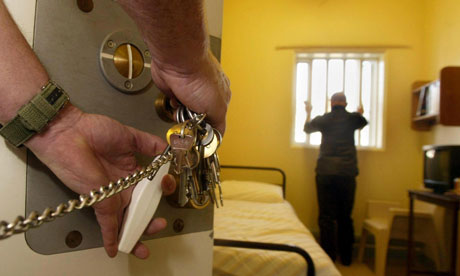
Critics of the Howard League's independent commission on sex in prison have argued that there is simply no great reason to look into this subject. Yet the need for its report was underlined to me when a prison service spokeswoman said in the Guardian that "sexual relations between prisoners are not commonplace".
Such statements are based on hope rather than evidence. We just do not know what goes on behind the doors of our prisons, where we incarcerate thousands, frequently two to a cell. The decision on who shares with whom is based on a "cell-sharing risk assessment" – one of the most challenging tasks in our overcrowded prisons. Occasionally, this can go very badly wrong, as demonstrated by the tragic case of Zahid Mubarek, who was brutally murdered by his racist cell-mate in Feltham young offender institution in March 2000.
We would, however, be wrong to assume that the rarity of such events implies the prison service gets it right the rest of the time. The results of cell sharing can range from supportive relationships, through coercive drug use and intimidation to murderous violence. They can also include both consensual and coercive sexual relationships where the dividing line can be very fine, as it is outside prison.
It is unsurprising that reports on the early findings of the commission are concentrating on consensual relationships and feeding the clamour for tougher regimes. Preventing or stopping such relationships is both impractical and counter-productive, not least because we have little idea of the extent of the problem or if it is indeed a problem. We don't know if people find love in prison. And if they did, it's unlikely they would own up to it: so prejudicial is the perception of such relationships that any sensible prisoner would not admit it to a parole board assessing his or her suitability for release.
We know that a stable relationship on the outside (along with a job and somewhere to live) helps reduce reoffending. Should we worry and be judgmental if such a relationship starts in prison? More important but very difficult is sex education, and the concept of safe sex. I recall the briefing of a health minister who fully understood condoms but blanched at the concept of dental dams (sheets of latex used for oral sex) and broke into a veritable cold sweat when given the activities and names of what could constitute "sex" in a home, let alone a cell.
What's important is managing the prison population to counteract corruption, gang violence, bullying and the whole plethora of complex prison relationships. Within this is the issue of coercive sex in prison. The stance of the prison service is again clear according to its spokeswoman: reported incidents of sexual assault in prison are rare. Well they would be, wouldn't they?
Consider any of the recent debates about rape reporting and prosecutions. Translate those issues to the institution that is a prison, multiply that by the taboo of male-on-male and female-on-female rape and you can see why stones are not turned over. Add the possibility of staff-on-prisoner rape and it all becomes too difficult to handle.
The US, not known for its liberal penal policies, bit the bullet many years ago. The Prison Rape Elimination Act of 2003 (PREA) was the first US federal law dealing with the sexual assault of prisoners. It followed a report in 2001 by Human Rights Watch which released a paper entitled "No escape: male rape in US prisons". The act was an acknowledgment of a problem people did not want to know about. It highlighted the vulnerability of people in prisons, not just adult males, but also women and children. It also acknowledged the complex power relationships between staff and prisoners.
Research in the US suggests that between 10% and 20% of prisoners have been sexually assaulted in some way. With the levels of incarceration in the US that means in excess of 1 million victims over 20 years. The act raised awareness of an issue that most people avoided, unless it was part of a "don't drop the soap" joke (there is even a prison-theme based board game with that title in the US). It paved the way for legal action by victims and helped counter the notorious Prison Litigation and Reform Act (PLRA) which makes it almost impossible for serving prisoners to take legal action against the state while incarcerated. Others have argued that the result has merely been the better collection of data but it has done little to change an abusive culture.
In the UK, we may have an "out of sight, out of mind" attitude to the problem, but it will not go away. Prison officer Neville Husband was jailed for the systematic abuse of young prisoners in Medomsley detention centre in County Durham in the 1980s. John McCabe, a former prisoner there, has said recently that he was repeatedly raped by Husband and another man both inside and outside the institution. An investigation continues.
As Donald Rumsfeld might say: "We don't know what we don't know". Isn't it about time we cared enough to find out?

